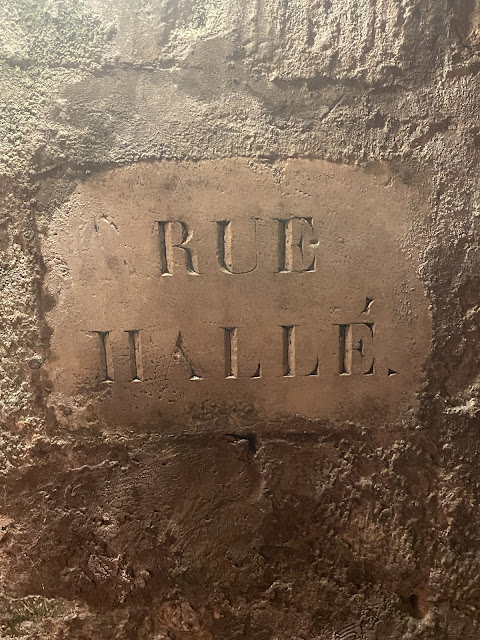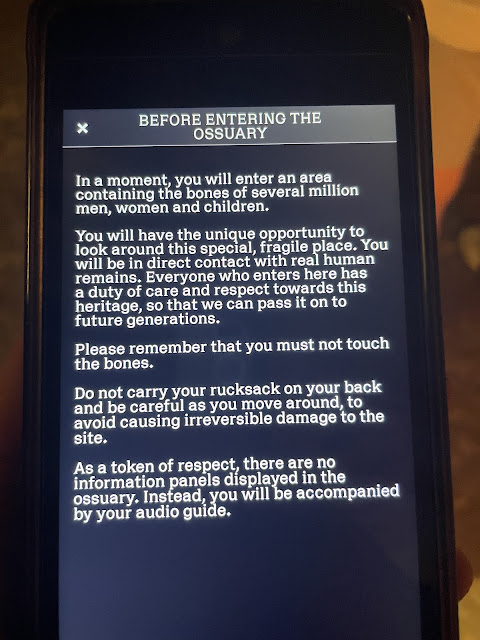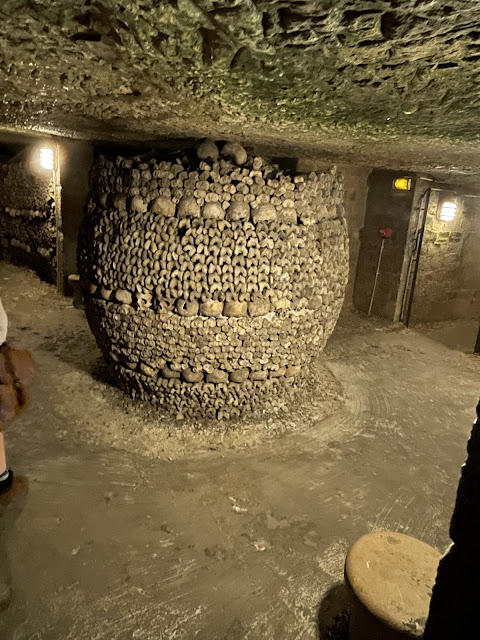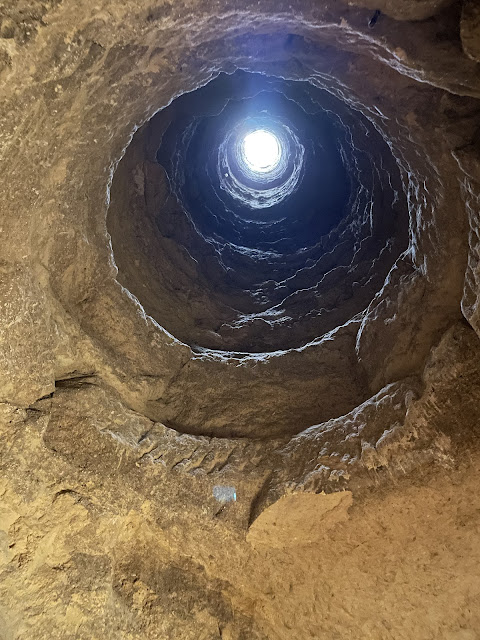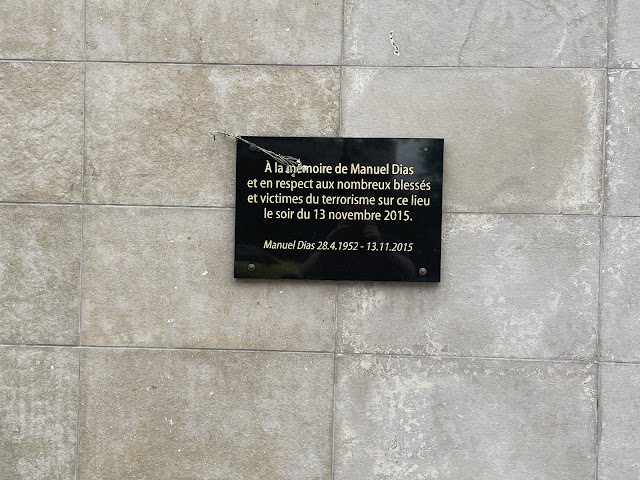Our final day in France started slowly with a sleep-in and finishing packing. We then had to move the car from the apartment car park to street parking so we could check-out.
We had a ticket to visit the Paris Catacombs, so we left the car and caught the train into town. We were a little early for the tour, so we had breakfast at a nearby McDonalds while we waited.
The Paris Catacombs were an interesting site to visit. They had begun as a limestone quarry under the city, but when sections of the city began to collapse into the mines, engineers worked to reinforce the quarries and tunnels. At the same time, Paris was running into burial space. As the city expanded and the population increased there was a need to make more room for burials. At the end of the 1700s the Les Innocents burial ground had formed a 2m high mound, filled with bodies.
The weight of these bodies, coupled with the quarried areas below the city, caused more collapses and burials were banned inside the city walls.
The decision was then made to exhume the bodies from Les Innocents and move them to the catacombs beneath the city. Initially the mines were disorganised, but in 1810 skulls and femurs were stacked into patterns organised by the district they were from.
The catacombs tour covered a small section of the extensive tunnel network and walked us through the displays of bones. I'll include our pictures below, along with the information from our audio guide transcripts:
 |
| Heading down |
From here we moved from the quarry part of the tunnels into the ossuary. As before, I will use the audio guide transcript provide some context but will just show the pictures we took. It is important to remember also that these are bones of people who were once living and that the Catacombs should be a place of respect. Some of this is lost in the tourist attraction part.
The amount of bones was incredible, every wall was lined with them, pushing back almost 2 meters deep.
The markers in each set of bones details the cemetery that the bones came from and the dates. There are also quotes about death on plaques throughout:
A section of the ossuary was dedicated to those who fell in the Revolution:
I did think that this game in the gift shop may have been a little misplaced:
After finishing at the catacombs we headed out to our final stop in Paris - Stade de France, the national stadium of France. The stadium houses 80,698 and is used for soccer and rugby, hosting the Rugby Union World Cup and FIFA World Cup.
It was built in 1998 in time for the FIFA World Cup and hosted its first event on 28th Jan 1998 - A football match between France and Spain (France won 1-0 from a goal by Zinedine Zidane). France then went on to defeat Brazil at Stade de France to win their first FIFA World Cup Title.
The ground was part of a terrorist attack in 2015 with two explosions outside the ground during a game between France and Germany. The terrorist was not able to enter the stadium because of security so instead detonated the explosive outside causing one death and the deaths of three terrorists. It is believed the plan was for one of the terrorists to detonate their bomb inside the stadium and for the others to detonate when the panicked crowd tried to evacuate. Because they did not have tickets to the match, the terrorists were not allowed entry. Unfortunately the other part of the attack - a shooting at the Bataclan Theatre and restaurants caused many more deaths. The victims of the attack are remembered on a plaque outside the stadium.
From there we grabbed some lunch and then drove to the airport, with Tomas enjoying the Concorde in the park:
Our flight home was slightly delayed so we got home around 11:00pm, tired but happy that we had managed to achieve and see so much in France.






































